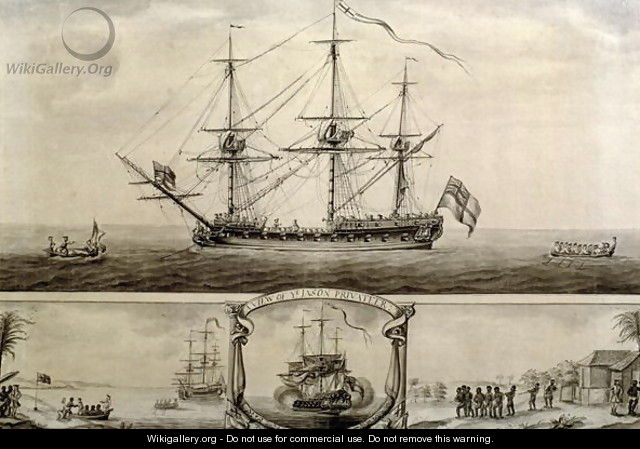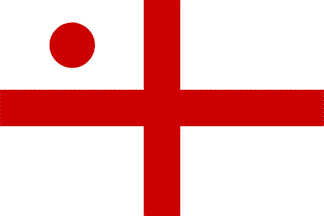I am in the final stages of the standing rigging on my Heller 1/100th model of the HMS Victory. My question is: do the ratlines continue up the topgallant mast shrouds, or do they stop at the top of the topmast shrouds? I can find no information on this. Thanks if you can help.
First of all, may I say…
[:D[[:D[[:D[[:D[[:D[
There are no ratlines on the topgallant mast shrouds, according to the George F. Campbell drawings included in Longridges’ book The Anatomy of Nelson’s Ships, and the illustrations by John McKay in his AOTS of The 100-Gun Ship Victory.
So, you are further along than you thought!
Both well worth owning, if you don’t already.
If you could post pictures, that would be very welcome.
There’s also some photos in McKay, probably from the 50’s, showing the same.
i’d call them braces, not shrouds as there’s only two or three each mast. There’s also no tightening assembly.
Handling the sail on the top gallant yard was done by lowering it all the way down to the cross trees where sailors could get to it. That sail wouldn’t need reefing of course.
Careful, GM. The word “brace” has a particular meaning as a rigging term. A brace is a piece of running rigging that runs from one end of a square-rigged yard to either the hull or the vicinity of a neighboring mast. There’s one brace on each end of each yard. Hauling on one brace, while slacking off the other, makes the yard swing so the sail can catch the wind.
The lines that run from the topmast crosstrees to the topgallant masthead are topgallant shrouds. They’re part of the standing rigging; their function is to keep the topgallant mast from falling over sideways.
Rigging terminology is a frustrating mess. If braces and shrouds are confusing, take a look at the various definitions of the word “bowline.”
if you two are getting confused we’re all in trouble , lol
Johns correct, must be the tryptophan. In fact I meant “stay”, which probably isn’t correct either!
The topgallant mast has a topgallant stay, which leads forward, and at least one pair of topgallant backstays (maybe two in a big ship), which lead aft and directly down to the channels on the sides of the hull. The topgallant backstays are among the longest lines in the ship.
Stoney’s original post correctly named the topgallant shrouds, which are much shorter.
This stuff doesn’t really need to be so complicated. The rigging of a sailing ship is made up of several categories of system, which are duplicated (with some variations due to size and location) for each spar. Standing rigging holds up the masts, and running rigging moves the yards, gaffs, and booms in a highly controlled manner to catch the wind and adjust the ship’s course and speed. A few lines (e.g., shifting backstaysys) blur the distinction between standing and running rigging slightly. And rigging evolved over the centuries.
There are two good ways to find out how to rig a model. One is to work from a good, detailed drawing. That can be frustrating, because not all rigging details show up clearly in a side view. The other kind of source is a verbal description that explains just how each line leads. To my notion the ideal is a combination of the two. For the Victory. Longridge’s Anatomy of Nelson’s Ships probably the best guide to rigging. It contains lengthy written explanations along with George Campbell’s beautiful plans.
Ive said it before and I’ll say it again: the Victory is not a good model on which to start learning rigging. Unfortunately there are few plastic sailing ship kits on the market that do make good newcomer projects. (After all, if we exclude the little tiny ones, the total number of plastic sailing ship kits currently in production can just about be counted on your fingers and toes.)
In the wood realm things are a good deal better. Bluejacket, for instance, has just released a nineteenth-century American revenue cutter that would be an excellent choice for a newcomer who wants to learn how rigging works.
Agree on all points.
 Thanks for the replies gentlemen, I do appreciate them. I am pretty well versed in sailing ship terminology and have been sailing for over forty years now. But I sure don’t know everything and that’s where this wonderful forum is a great asset.
Thanks for the replies gentlemen, I do appreciate them. I am pretty well versed in sailing ship terminology and have been sailing for over forty years now. But I sure don’t know everything and that’s where this wonderful forum is a great asset.
I didn’t figure the ratlines ran up that far, but wasn’t sure. I do have Longridge’s superb book and the outstanding illustrations also did not show them. Also, Last night, wouldn’t you know I would find the answer to my question. In K.M. Marquardt’s book “Eighteenth-century Rigs and Rigging” on page 96 he states the practice was discontinued in the second half of the eighteenth century.
The Heller Victory kit does have some problems to be sure, but I have enjoyed the build, in this scale, to be sure.
How does one insert a picture?
Stoney,
I refer you to an old thread on this subject (posting pictures). I’ll add an image from my library on Photobucket to illustrate what Texgunner is referring to.
http://cs.finescale.com/fsm/feedback_help_and_testing/f/22/t/165755.aspx
Mike
That’s a mighty fine looking model, Stoney. Could you show us some more pictures?
A Heller Victory at such an advanced state of completion is a rare sight!
Speaking of the Victory - I was just idly surfing around the ship’s website. One recent addition to it is this most interesting video about the color scheme: http://www.hms-victory.com/restoration-log/hms-victory-her-true-colours .
One commentator toward the end laments that thousands of models all around the world have now been declared to have the wrong color scheme. That strikes me as a bit over-stated.
That entire website is worth extensive browsing - especially the section on the current restoration. (That ship has been almost constantly under restoration in one form or another for at least forty years. That’s the way wood ship preservation works.)
One subject the people associated with the ship never seem to mention: the big ornamented entry ports. A recent article in the Nautical Research Journal agrees with my long-time contention: Heller got it right, and those entry ports weren’t there in 1805.
Gee, those are great sites JT. As much on-line searching I’ve done since starting the build, those two I’ve missed some how.
On a side issue, I now have three complete book shelves of non fiction books I’ve brought over the years on nautical subjects and I value each one dearly.
I agree with you on that, based on more second hand knowledge as opposed to research as you’ve done.
Such a comment as you’ve made would no doubt be greeted like a bucket of fish heads in shark infested waters, in some forums!
Yep, seeing a Victory that far along is pretty darn impressive.
Stoney,
Wonderful work so far - and that’s far!
Please check your email as I’ve sent you a PM regarding one of the biplanes on your Photobucket library.
Mike
Regarding those entry ports - I’m troubled a bit by the approach that many people seem to have taken toward the question. They usually seem to say “well…there’s no definitive evidence that the entry ports weren’t there in 1805.” My logic is that I’ve never seen any evidence that they were there. Maybe somebody can show me such evidence, but I have yet to see it.
I have a suspicion (no more than that) that somebody simply made an honest mistake during one of the recent restorations. Apparently an excellent carver was hired to replace the entry port canopies (which presumably had deteriorated beyond repair). The results, which can be seen in quite a few photos on the ship’s website, are beautiful - and must have cost a great deal. (Just the raw wood would cost a lot these days.) It would be difficult to suggest that these fine carvings simply be removed and discarded on grounds of historical accuracy.
For what it’s worth, if (gawd forbid) I were to build a model of the Victory in 1805 configuration I wouldn’t give it entry ports. But I’d be entirely receptive to fresh evidence.
Coming down the home stretch on my Victory build and I am representing her in harbor with the yards on the caps, sails un-bent. I was wondering, what would be the flag ediqite while at anchor with the Admiral on board? Would the RN ensign be on the staff at the taff rail? Would the boad pennant be at the main mast head?
Thanks if you can help.
In the present day (in the 20th century at least), there is a Union Jack flown at the bow, admiral’s flag from one of the masts’ depending on rank and ensign at the stern (during daylight) when a ship is at anchor or moored in some way to the ground.
It was the same in Nelson’s time with the Union Jack flown from a jackstaff on the bowsprit and most paintings seem to confirm that.


But not all…
Nelson was a Vice-Admiral, so presumably his flag was flown from the foremast, like this but without the red dot. I don’t see a pennant on the mainmast for a Vice-Admiral in an illustration from 1804 in Brian Lavery’s “Nelson’s navy”

I thought this was going to be an easy one to answer. I was wrong.
British flag etiquette was considerable less formal and consistent than in the modern Royal Navy - and the modern U.S. Navy is even stricter. The Royal Navy, for instance, has always been careless regarding the use of the jack. (In the U.S. Navy, the jack is flown while the ship is in port, but taken down when the ship gets under weigh.) I’ve seen several slight variations of the *Victory’*s flag outfit.
One thing is certain: since (in 1805) she was part of a squadron commanded by a vice admiral of the white, she would have carried the white ensign on her stern flagstaff - or, if the flagstaff wasn’t in its usual position (i.e., had been removed to let the driver boom swing) from the driver gaff. The union jack might have been flown from the ensign staff at the bowsprit cap - but that fitting might or might not be there, depending on the circumstances. If not, the jack might be flown from the fore royal stay. Modern photos of the ship rarely show the jackstaff on the bowsprit. And most of them seem to show the white ensign being flown from the driver gaff.
I’ve seen three versions of the 1805 vice admiral of the white’s flag. Sometimes its a white rectangle with a red cross on it - period. Sometimes it’s got the red disk in the upper left quadrant, as Cerberus showed it. Sometimes the disk is blue. Take a look at this reference: https://flagspot.net/flags/gb^nrank.html .
And if you want to get really mixed up, look at what J.M.W. Turner had to say about the *Victory’*s flags at Trafalgar: http://media-cache-ak0.pinimg.com/736x/6b/b0/03/6bb0036e92f13be9b2ba91ee0ae35223.jpg .
I’m not about to pronounce any permutations of those flags “wrong.”
Good luck.

